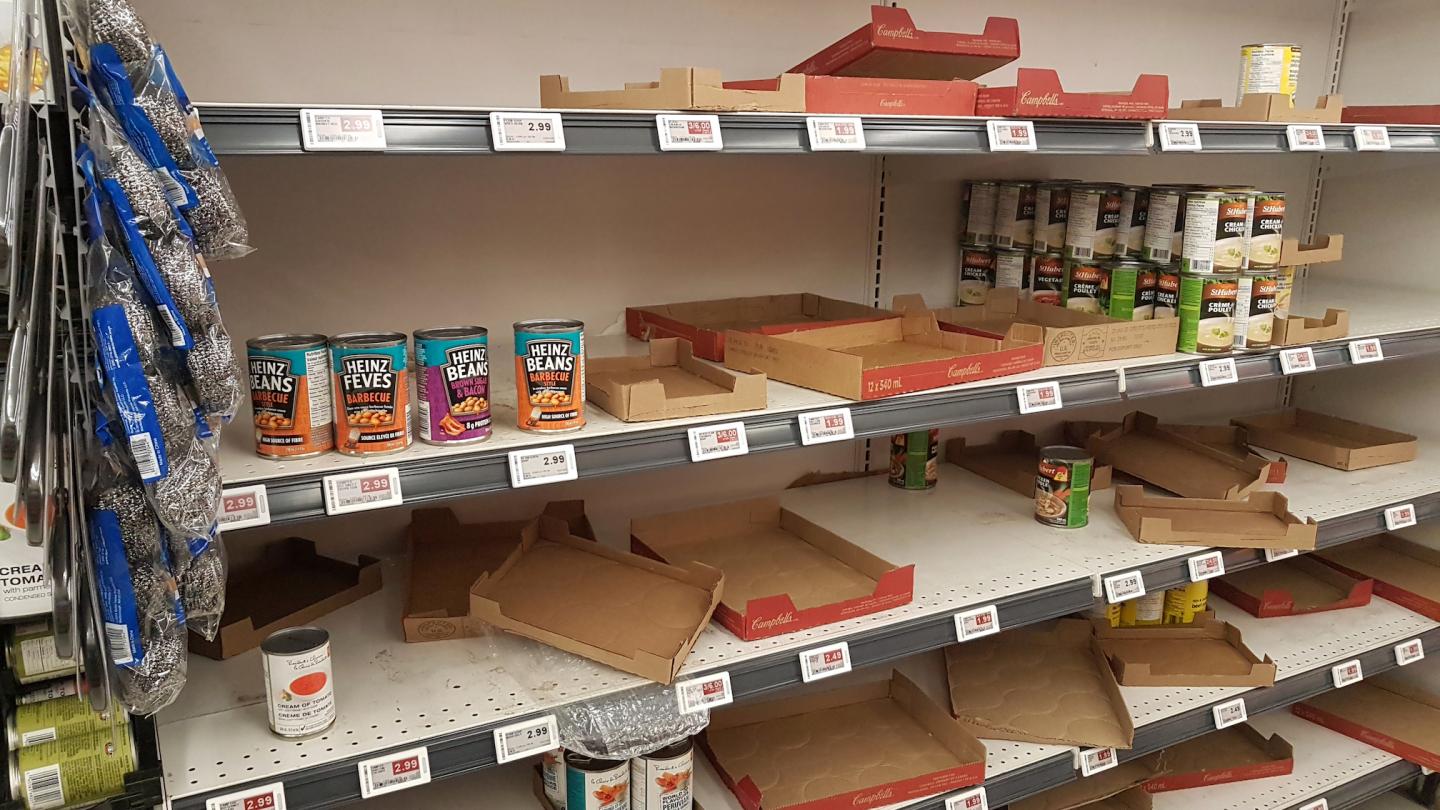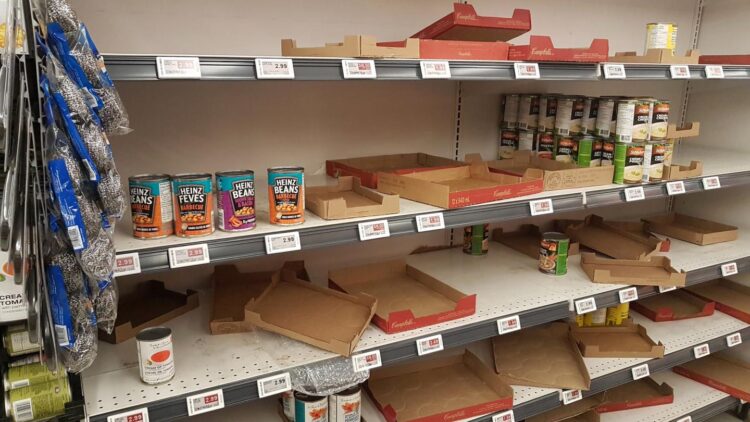Strong connection to job losses

Credit: Ingrid Cold
Food insecurity in Vermont has increased by one-third during the coronavirus pandemic, from 18.3% to 24.3%, according to a statewide survey conducted by the University of Vermont at the end of March and announced in a series of briefs today.
The increase in food insecurity was strongly correlated with employment status. Among survey respondents overall, 45% had lost their jobs, been furloughed or had their hours reduced during the pandemic. Among food insecure Vermonters, two-thirds (66%) had experienced job losses or work disruptions since the outbreak of the pandemic.
“Our data suggests that the growth of food insecurity is related to job layoffs and other employment disruptions,” said Meredith Niles, assistant professor in UVM’s Department of Nutrition and Food Sciences, a fellow in the Gund Institute for Environment and the principal investigator on the study. “People who had lost their jobs or had their work disrupted were far more likely to be food insecure compared with those who remained employed.”
While job losses during the pandemic created many newly food insecure people, a sizable number of respondents — 84% — who had been food insecure before the pandemic remained so, a telling statistic for Niles.
“These are already vulnerable people and households who may be even more vulnerable now,” she said. “They were experiencing challenges with food access before the pandemic, and this event has not helped them.”
Surprisingly, less than 30% of respondents experiencing food insecurity participated in food assistance programs, Niles said.
In general, respondents with food insecurity expressed greater worry about food access than survey respondents overall. And they were more likely to adopt coping strategies to address food access challenges, like buying foods that would last longer (77%), buying different and/or cheaper foods (66%) or eating less (66%).
The last category is worrisome, said Farryl Bertmann, a lecturer in the Department of Nutrition and Food Sciences and a member of the research team.
“When people start eating less or disrupting their current eating patterns, we become concerned,” she said. “When forced to skip or stretch meals, people increase their risk for nutrition-related diseases, decrease their immune function and may negatively impact their mental and emotional health.”
For respondents experiencing food insecurity, the most helpful assistance strategies included receiving additional money for food and bills, achieving greater trust in the safety of stores and seeing benefits offered by government programs increased.
The average amount of additional money they said would be helpful for food and bills, if they had trouble affording food, was $110 per week.
“That’s not a huge number, but it is significantly more than they get from public assistance programs like 3SquaresVT,” said Emily Morgan, assistant professor in the Department of Nutrition and Food Sciences, another researcher involved in the survey project. “It shows there is a greater need than the current programs allow for.”
The coronavirus changed food habits and practices for respondents overall, the survey found. Eighty-seven percent said they usually or always reduced the number of trips they made to the grocery store to avoid exposure to the virus, and 58% said they usually or always spent more time cooking.
While respondents experiencing food insecurity expressed greater concern and challenges accessing food, most of the respondents in the survey were unable to find all the food their households were accustomed to.
“We are all feeling the impacts of the coronavirus on the food system,” Niles said
In other survey findings:
- –Vermonters are helping each other. The percent of people reporting that “someone brings me food” doubled from 10% to 20% since the start of the outbreak.
–Respondents said that increased trust in the safety of going to stores and more food in stores would be the most helpful actions –Respondents worried most about food becoming unaffordable and running out of food if they were unable to go out.
–Respondents perceive their actions differently than average U.S. households. For example, only 49% reported buying many more items in a single trip to the grocery store, but 88% of respondents felt that the average U.S. household did so.
–Compared to food secure respondents, those who were food insecure reported more frequent challenges related to food access after the ‘Stay home, stay safe’ order was put in place. Challenges including buying as much of or the types of food needed, food affordability and food pantry access.
–Compared to food secure respondents, food insecure households were less likely to use a farm CSA, local farmstand or specialty store (a coop, health food store or ethnic market, for instance) but were not less likely to have used a farmers’ market in the past year. With the closure of farmers’ markets in Vermont, this could indicate that food insecure households may have limited ability to access fresh, local Vermont products.
–Respondents who reported food insecurity in the year prior to the coronavirus outbreak were more likely to be people of color, female, live in households with children and live in larger households.
The survey has a margin of error of 2%. A total of 3,251 Vermonters responded. The survey launched on March 29th and was concluded on April 12th. The survey was developed in collaboration with researchers at Johns Hopkins University and fielded by the University of Vermont team. The research team intends to conduct the survey in other states and nationally, and to conduct additional future surveys in Vermont to assess changes in the situation.
###
Media Contact
Jeff Wakefield
[email protected]





